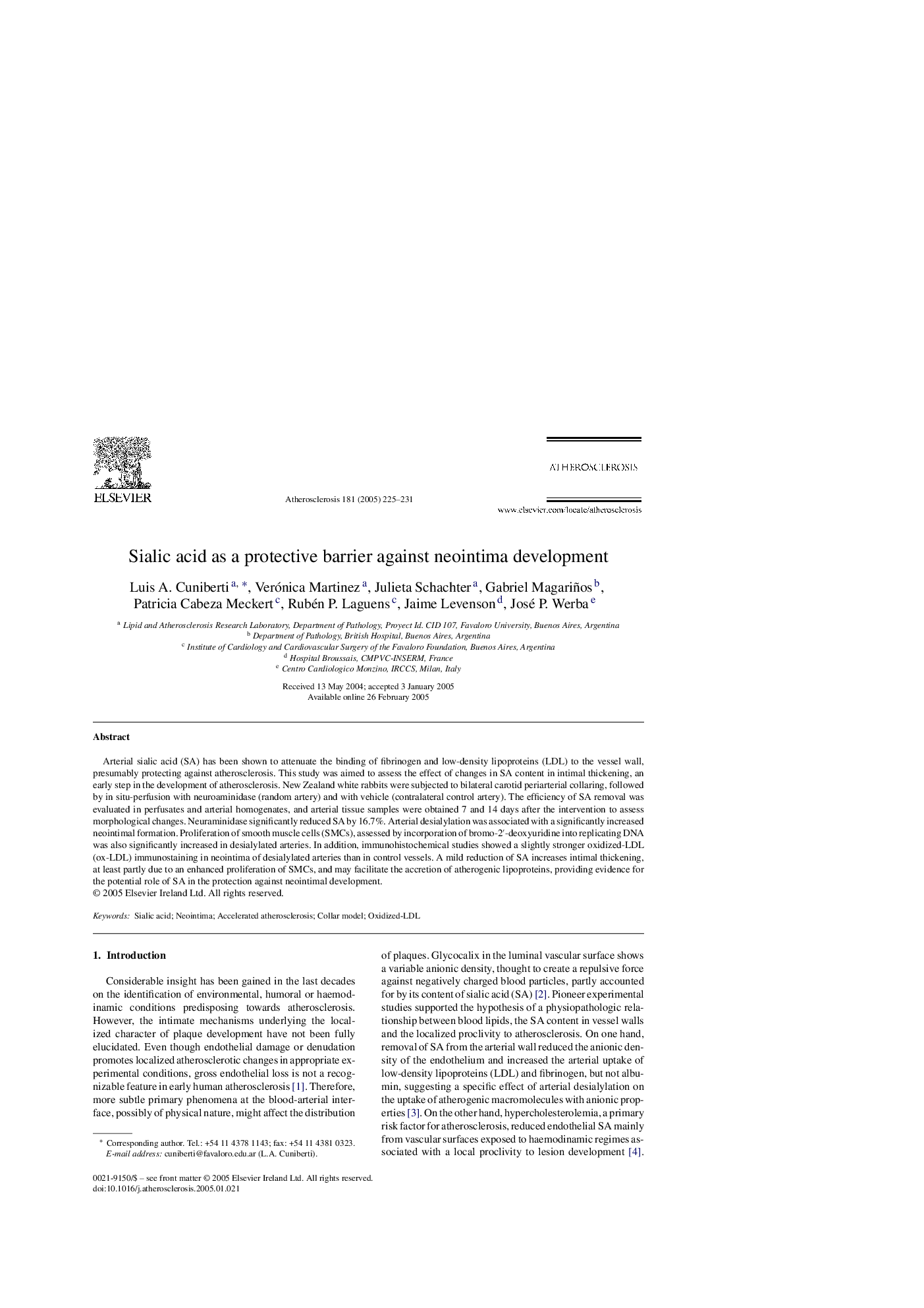| Article ID | Journal | Published Year | Pages | File Type |
|---|---|---|---|---|
| 9157588 | Atherosclerosis | 2005 | 7 Pages |
Abstract
Arterial sialic acid (SA) has been shown to attenuate the binding of fibrinogen and low-density lipoproteins (LDL) to the vessel wall, presumably protecting against atherosclerosis. This study was aimed to assess the effect of changes in SA content in intimal thickening, an early step in the development of atherosclerosis. New Zealand white rabbits were subjected to bilateral carotid periarterial collaring, followed by in situ-perfusion with neuroaminidase (random artery) and with vehicle (contralateral control artery). The efficiency of SA removal was evaluated in perfusates and arterial homogenates, and arterial tissue samples were obtained 7 and 14 days after the intervention to assess morphological changes. Neuraminidase significantly reduced SA by 16.7%. Arterial desialylation was associated with a significantly increased neointimal formation. Proliferation of smooth muscle cells (SMCs), assessed by incorporation of bromo-2â²-deoxyuridine into replicating DNA was also significantly increased in desialylated arteries. In addition, immunohistochemical studies showed a slightly stronger oxidized-LDL (ox-LDL) immunostaining in neointima of desialylated arteries than in control vessels. A mild reduction of SA increases intimal thickening, at least partly due to an enhanced proliferation of SMCs, and may facilitate the accretion of atherogenic lipoproteins, providing evidence for the potential role of SA in the protection against neointimal development.
Related Topics
Health Sciences
Medicine and Dentistry
Cardiology and Cardiovascular Medicine
Authors
Luis A. Cuniberti, Verónica Martinez, Julieta Schachter, Gabriel Magariños, Patricia Cabeza Meckert, Rubén P. Laguens, Jaime Levenson, José P. Werba,
